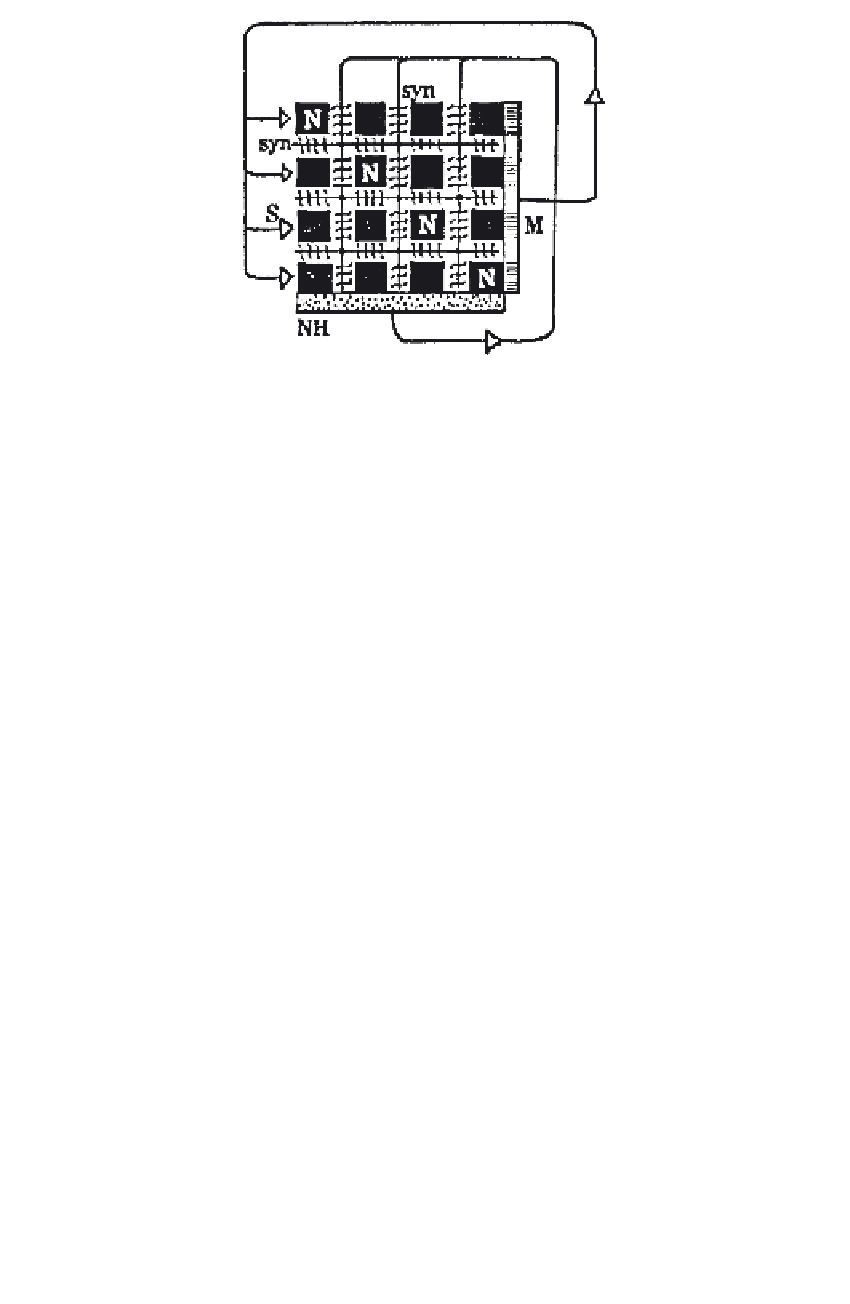Information Technology Reference
In-Depth Information
FIGURE 9. Flow of signals in the nervous system from the sensory surface (left
boundary S) via bundles of nerves (black squares N) and synaptic gaps (syn) to the
motor surface (right boundary M), which, in turn changes the stimulus distribution
along the sensory surface; and, on the other hand, the signal flow from the neuro-
hypophysis (lower boundary NH), whose activity modulates the composition of the
steroids in the synapses and, hence, the operational modalities everywhere within
the various bundles of neurons.
lower edge, schematizing the connection of the central nervous system with
the neurohypophysis, which, in analogy to the motor surface, controls,
via the vascular system—the “endocrine-operational synaptic gap”—the
micro-environment of all synapses (shown by the minute threads in the
spaces.)
If one, in this representation, interprets the length of the edge of a square
with the number of points of activity in the neuron bundle belonging to it,
we would have had to sketch the whole system with 10
5
¥ 10
5
squares in
order to do justice to the much larger proportion of interior compared with
exterior surface. A square would then have to be represented by a point
with a diameter of about 1 micron if the whole diagram were to be exactly
the same size as the one given here. In order to express this functional
scheme geometrically, we can close circles of signals flowing in a right angle
to one another by wrapping them around a vertical and a horizonal axis. A
plane figure wrapped according to two right-angular axes is called a torus.
Figure 10 shows a representation of this thought of the double closure of
the stream of signals. The seam up front corresponds to the motor sensory
synaptic gap, the horizontal seam, to the neurohypophysis.
This minimal diagram of the primal organization of an innervated being
may also help see the problem which occurs if we attempt to deduce the
procedures of computing a reality without the help of an observer who pre-
tends to know both sides. In other words: If we wish to develop a consis-

Search WWH ::

Custom Search